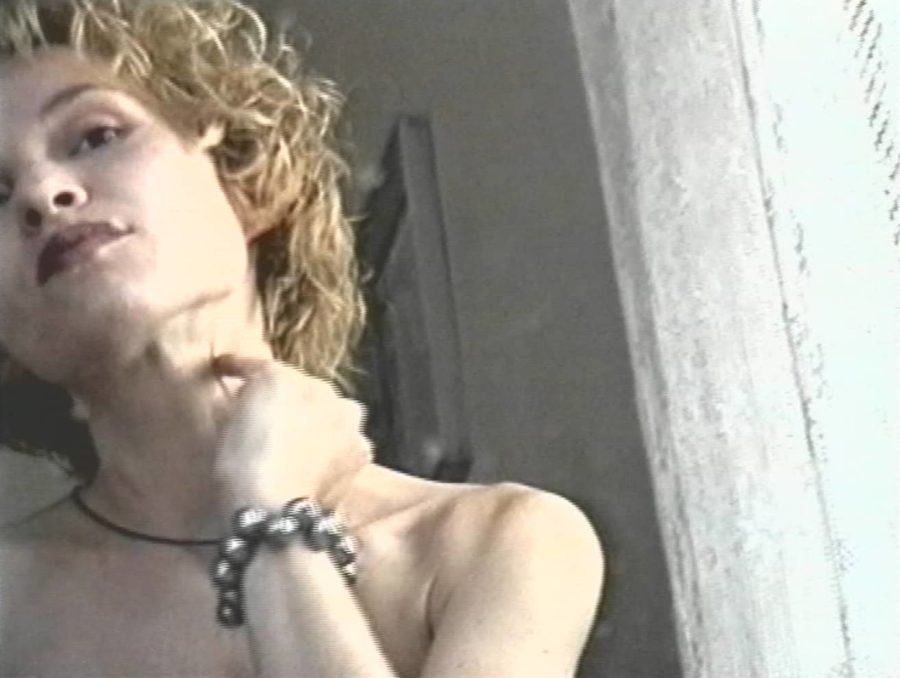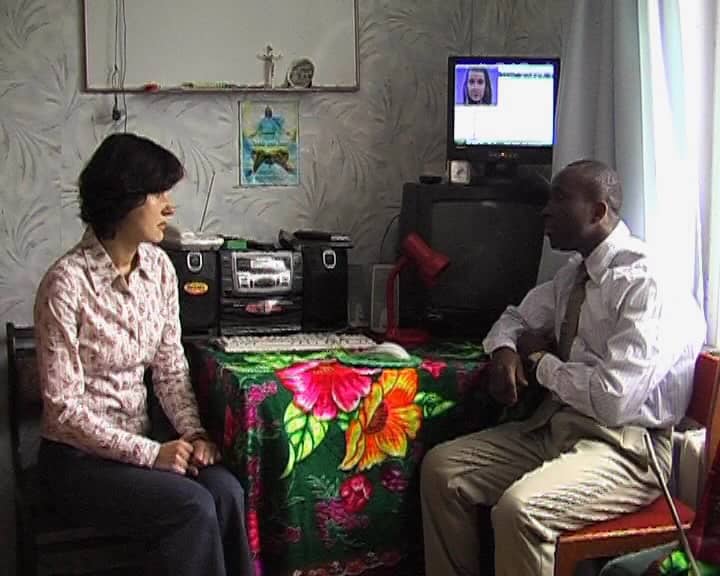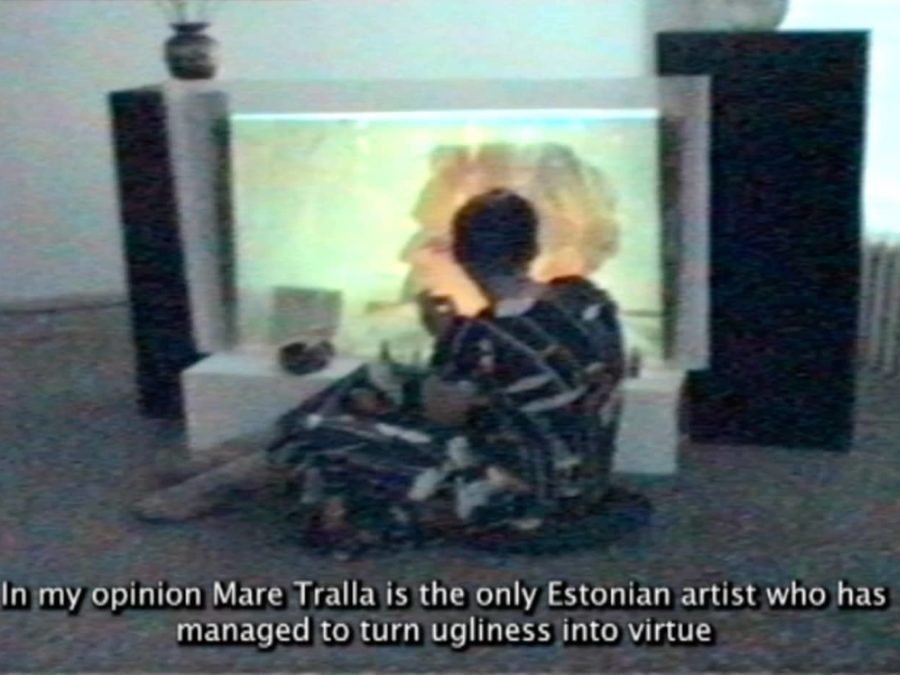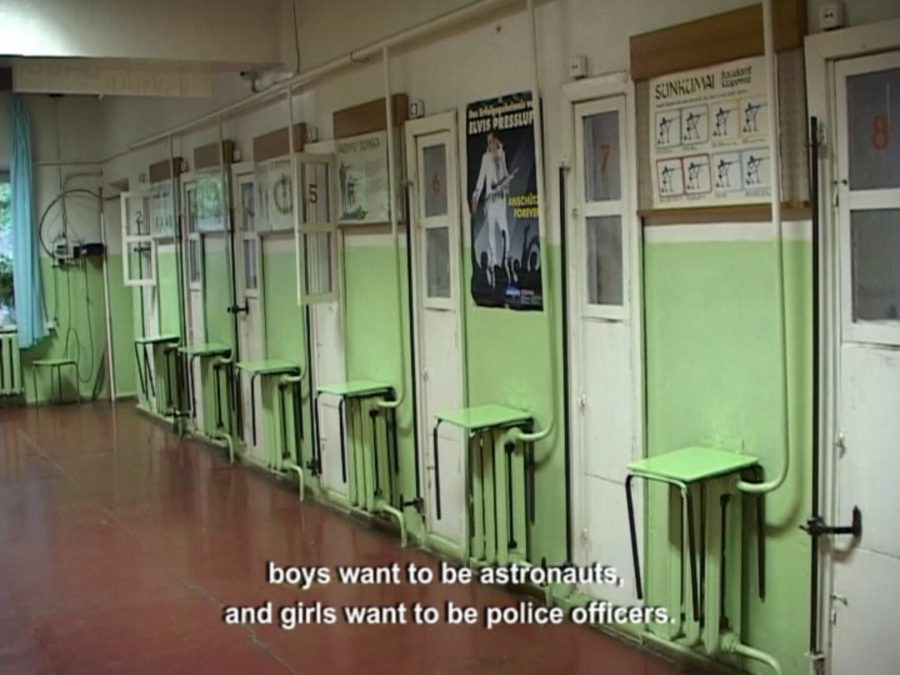The Moon and The Sunshine (2000) is an early work of Boryana Rossa which touches upon several semantic layers and points towards the directions in which the artist has been continuously working, such as technology, body art, and feminist critique. Firstly, it is a work about the concept of femininity as a set of behaviours, legitimized by society. The masculine is presented in mere traces and unclear projections on the screen, but this binary opposition is indispensable for the composition of the video. The unmistakably post-socialist interior (crocheted white napkins, plastic flowers, a Madonna Litta reproduction in a golden frame) commands that any meaning derived from the work or ascribed to it should be articulated with an awareness of the region’s geopolitical and historical specificity. As such, the violence which is the central theme of the video does not welcome a critique from a gendered perspective. Russian philosophers in the 1990s suggested that the difference between East and West in the logic of the Cold War is also reflected in the way the violence unfolds and is played out.* Suffering and violence in Western societies can be thematized, limited in time, and criticized. Contractual relations and personifications of pain allow to define, contain, and limit the violence. Pain, in the context of a society where the body is rather collective than subjective, has to be endured with dignity as no criticism can limit the violence which unfolds and folds over the collective body.
Camera by:
Boryana Dragoeva
Ventsislav Zankov
Editing by:
Vanja Markova
* See for example: Keti Chukhrov, “In the Trap of Utopia’s Sublime. Between Ideology and Subversion,” in: Bojana Pejic (ed.), Gender Check: Femininity and Masculinity in the Art of Eastern Europe, Cologne: Walther König 2009, pp. 32–38, here: pp. 35f.
Boryana Rossa is an interdisciplinary artist and curator. In 2004, she established ULTRAFUTURO, an art collective focused on the social implications of science together with Oleg Mavromatti. Her works are represented in numerous public and private collections, including The Art Collection of Erste Group and Elizabeth A. Sackler Museum of Feminist Art, Brooklyn Museum. She participated in Gender Check, re.act.feminism – a performing archive, and Transitland: Video Art from Central and Eastern Europe 1989–2009. She holds a PhD in Electronic Arts (RPI, Troy, NY, 2012) and is Associate Professor in Transmedia at the School of Visual and Performing Arts, Syracuse University.





